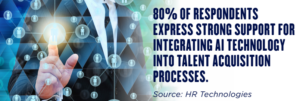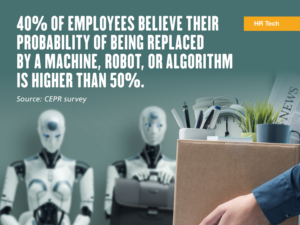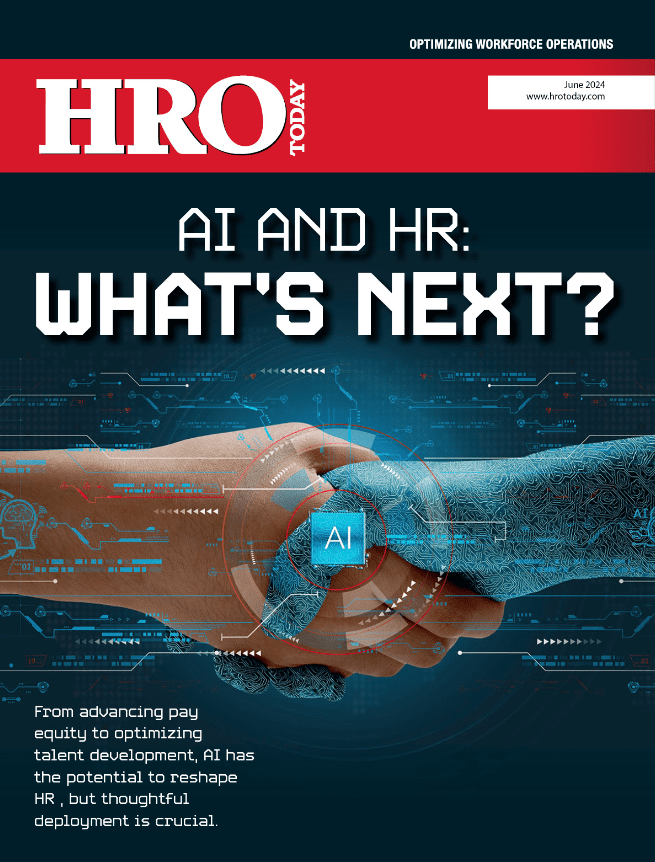AI has been around for years, but is HR taking full advantage of intelligent automation?
By Simon Kent
A survey carried out by HR Technologies among 1,000 U.K.-based HR professionals found the average spend on HR technology in the last financial year was a little over £340,000. The principal motivation for this outlay was to leverage technology to streamline HR processes. The survey found 80% of respondents expressing strong support for integrating AI technology into talent acquisition processes, perhaps making the card for IT investment in the year ahead.
While excitement, curiosity, and caution circulate around the use of AI, the promise of technology to automate HR processes and thereby free up the function to deliver more value-add work, has been a long-standing promise. So, has it actually happened?
“We use tech to automate workstreams and data sharing,” confirms Katherine Loranger, chief people officer at Safeguard Global. Facilitating role-based accounts and permissions, automatically enrolling employees into training, and sending information to payroll and benefit vendors are all among the tasks which have–thankfully–been switched from manual to automatic. And yes, Loranger confirms the approach has directed time back to HR team members to focus on employee-centric activities, rather than more administration. As a next move, the company is now looking at tech to enhance employee self-service, using AI to access the company’s internal HR libraries.
“To make automation successful, it involves letting go of the idea that technology has come to replace human involvement and expertise,” she says. “For technology to evolve, human insight into what happens in the real world is still required. So we should be heading toward human-centric AI work cultures where technology supplements people’s effort and expertise.”
To some extent, the discussion on AI has obscured or blurred the lines with tech automation. Discussions around the subject can fail to identify that AI is not a prerequisite for effective automation. Moreover, as Adam Bazeley, EMEA head of client development at SAP Concur notes, the background hum around ground-breaking technology can distract HR from its goals. “With persistent discussion on AI, it’s becoming increasingly hard for HR leaders to ignore the call to automate operations to keep up with the pace of change,” he says. “However, it’s important to start with smaller, strategic steps to ensure that these operational changes are sustainable and effective in the long run.”
Digitising expenses and invoicing, argues Bazeley, can lay the foundation for more complex and far-reaching projects in the future. Moreover, taken at a slower pace, automation will not only make processes better, but offer HR useful data outputs too. “As processes become digitised and automated, organisations can harness the power of data-driven insights to optimise decision-making and enhance employee experiences,” he says.
Nicole Seredenko, head of products and insights at DEJI Digital, an AI company designed to support conversations around DEI and HR in the workplace, says HR needs to take a pragmatic approach as they bring technology in to enhance the function. “For HR departments, the best way to identify opportunities for AI implementation is to be very goal orientated,” she says. “Think about a few key goals for your HR team or department and work backwards to determine which might benefit the most from greater automation.”
At some companies, Seredenko says HR is already using AI to analyse the end-to-end employee lifecycle. Through this method, they are effectively automating career progression throughout the company and ensuring employees do not miss out on good opportunities when they are ready. This level of automation enhances the employee experience and at the same time is delivering tangible metrics to HR, meaning they can target areas for improvement and personalisation of the employee experience.
“The biggest mistake a business could make is using AI for the sake of it, without attaching specific business outcomes or goals to its usage,” says Seredenko.“Every business is different, and this is why HR needs to ensure their usage of AI is tailored and personalised to match their specific business goals, through inclusive, scalable, and cost-effective AI solutions.”
But while HR may identify effective uses of technology to make their employee experiences better, they will only deliver if employees accept these processes and feel an improvement. According to Duncan Casemore, CTO and co-founder of Applaud HR, a CEPR survey revealed that 40% of employees believe their probability of being replaced by a machine, robot, or algorithm to be higher than 50%. Anything that looks like it’s replacing work may therefore raise suspicions.
“Overcoming resistance to change and securing employee buy-in can be an uphill battle if they feel their job is threatened,” says Casemore. “For this reason, it’s really important for business leaders to ensure they deploy effective and nuanced communication to reassure their workforce. Employees need to be shown that automation is meant to complement and enhance their roles, not replace them. By fostering a positive narrative around automation, businesses can help employees embrace this transformative technology as a means to evolve and grow within their roles.”
This is something Loranger wholeheartedly agrees with. “It is crucial,” she says, “to involve employees from the outset in identifying areas where processes can be enhanced. Their first-hand experience equips them to pinpoint existing opportunities for more efficient ways to address the work they encounter daily.”
Getting this involvement can be done through regularly engaging with them through feedback sessions, surveys, or informal conversations to gather valuable insights. “We’ve seen by striking the right balance between technology and the human touch, we’ve paved the way for a more efficient, inclusive, and forward-thinking business,” Loranger says.
It may well be that HR has yet to take full advantage of the automation technology available, but that may be because the function is ensuring the introduction of the technology is done correctly and produces a good result for all those concerned. On one hand, it would be disastrous to automate a process that doesn’t fundamentally work. On the other hand, applying technology to processes can initially flag incompatibilities and errors which need to be dealt with. As Casemore notes, “As we strive for a more streamlined future, we must acknowledge that the implementation of new technology cannot happen overnight.”
















